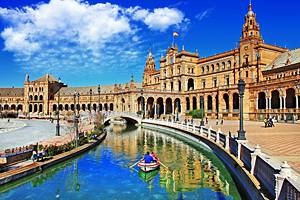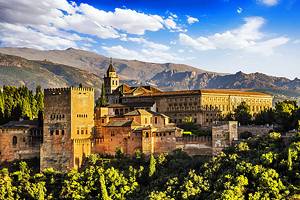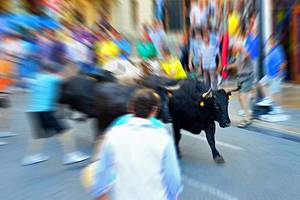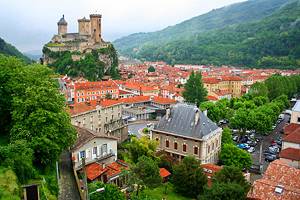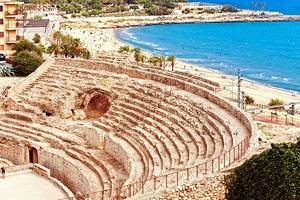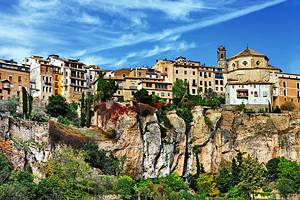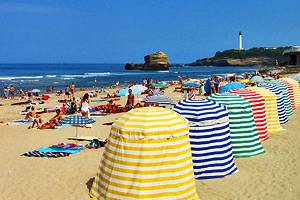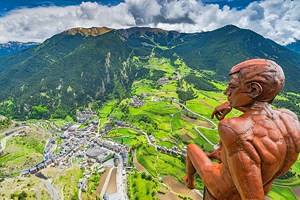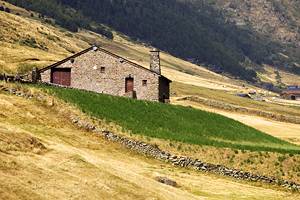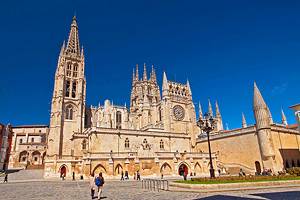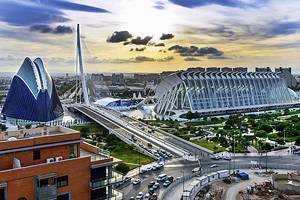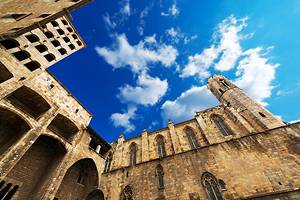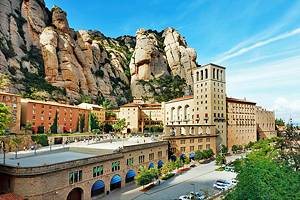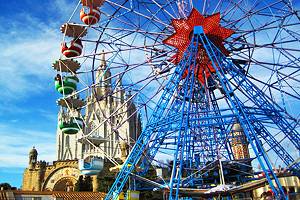Attractions & Things to Do in Zaragoza
A treasure trove of historical and cultural attractions awaits your discovery in Zaragoza. You will find well-preserved archaeological sites, the first Marian church in Christendom, and fabulous art museums.
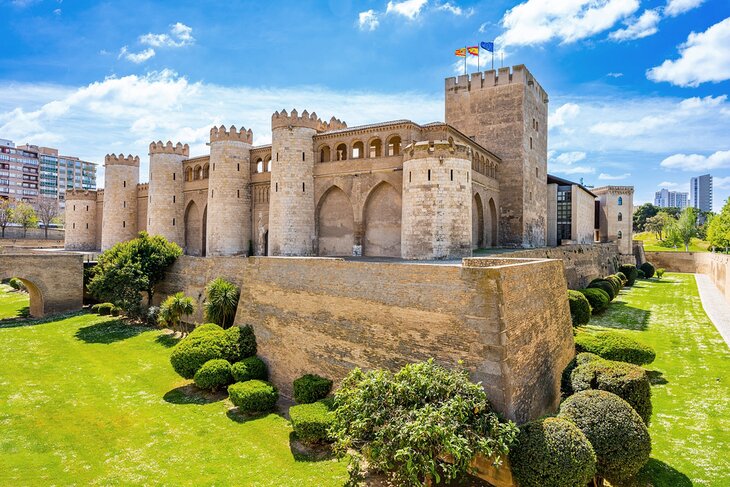
If ancient Roman history fascinates you, then head to the city's archaeological sites. You can follow the "Caesaraugusta Route" to find the forum, thermal baths, and theater of the 1st- to 2nd-century Roman town (named after Emperor Augustus) that once flourished here.
The city is most renowned for its Baroque architecture, in particular the Basilica of Our Lady of Pilar. This splendid monument is one of the most important pilgrimage churches in Spain.
Equally fascinating are the 12th-century Moorish palace and the UNESCO-listed Mudéjar architecture of San Pablo, Santa Maria Magdalena, and San Juan de los Panetes churches.
Also on the list of must-see destinations are several museums. The city boasts collections devoted to tapestries, contemporary art, and the works of Francisco de Goya.
Learn about the best places to visit with our list of the top attractions and things to do in Zaragoza.
- Basílica de Nuestra Señora del Pilar
- Museo del Foro de Caesaraugusta
- Catedral de Zaragoza
- Palacio de la Aljafería
- Acuario Fluvial (River Aquarium of Zaragoza)
- Educational Museum of Origami in Zaragoza (EMOZ)
- Iglesia de San Pablo de Zaragoza
- La Lonja de Zaragoza
- Instituto de Aragonés de Arte y Cultura Contemporáneo
- Basílica Santa Engracia
- Museo Goya - Colección Ibercaja
- Museo de Zaragoza
- Museo Pablo Gargallo
- Museo de las Termas Públicas de Caesaraugusta
- Iglesia de Santa Maria Magdalena
- Iglesia de San Juan de los Panetes
- Teatro Romano de Zaragoza
- Day Trips from Zaragoza
- Fuendetodos and the Goya Museum
- Huesca
- Sos del Rey Catolico
- Monasterio de Piedra
- Map of Attractions & Things to Do in Zaragoza
Basílica de Nuestra Señora del Pilar

The Basilica of Our Lady of Pilar is the city's most iconic landmark. This gem of Baroque architecture dates to the 17th and 18th centuries and is classified as a National Monument.
Gracing the banks of the Ebro River, the basilica looks most impressive from across the river. The entrance is on the other side at the Plaza del Pilar, a spacious town square lined with elegant historical buildings.
Take time to admire the basilica's monumental exterior. Then enter the awe-inspiring interior, which holds a precious object of veneration.
Since the Middle Ages, pilgrims have journeyed here to honor an image of the Virgin Mary and the Sagrada Columna (Sacred Column), a pillar of jasper stone that is associated with a Marian apparition.
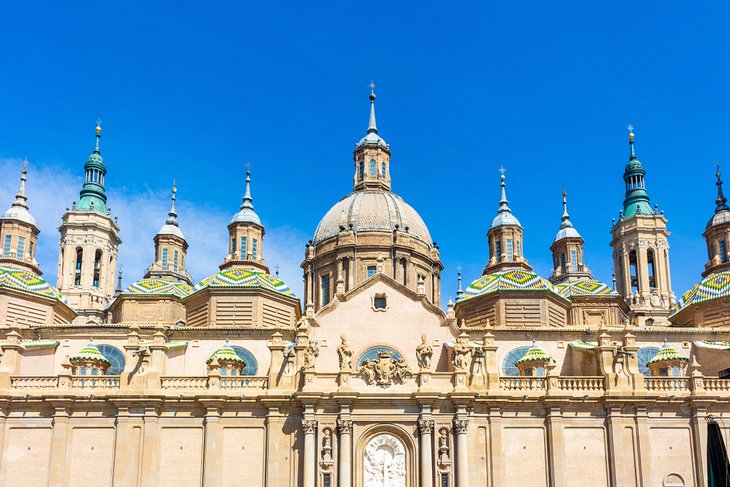
According to the legend, Saint James the Apostle came to Caesaraugusta where he had a vision of the Virgin Mary, instructing him to build a church here. Saint James built a small chapel dedicated to Saint Mary on this spot, making it the first Marian shrine in Christendom.
Several other churches were later built on the site; however, the present basilica is still devoted to the Virgen del Pilar (Our Lady of Pilar). A figure of the Virgin stands behind a mantelpiece. This icon is taken out and presented to the faithful every year on January 2nd, commemorating the date when the Virgin appeared.
The other sacred object, the Sagrada Columna (also known as "El Pilar") is now adorned with fanciful silver plating. Other valuable religious artworks and lavish Baroque monuments are found throughout the basilica, including the alabaster high altarpiece and the frescoes by Goya.
Address: Plaza del Pilar, Zaragoza
Museo del Foro de Caesaraugusta
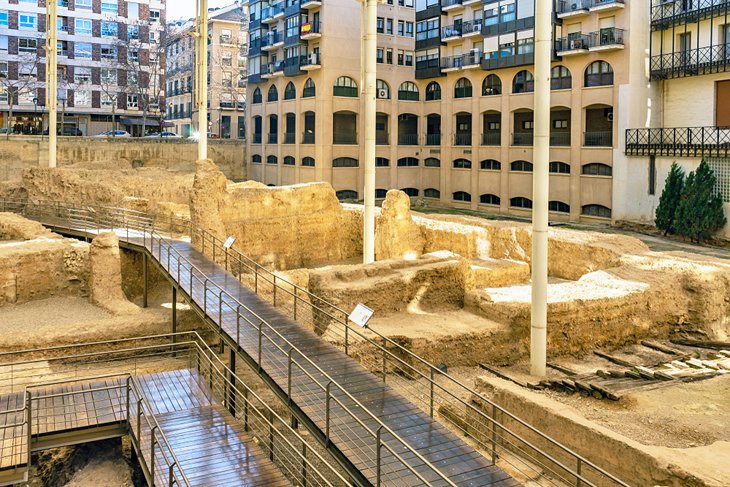
The Museo del Foro de Caesaraugusta (Museum of the Roman Forum of Caesaraugusta) provides a glimpse into the life of Caesaraugusta, an ancient Roman colony (town) of the 1st and 2nd centuries that once occupied present-day Zaragoza.
Named after Emperor Augustus who founded the town, Caesaraugusta was known for its splendors. The city had a theater, public baths, and a marvelous forum at the center of town life.
The museum stands on the site of the archaeological excavations of the Caesaraugusta forum, underneath the Plaza de La Seo. On display are remains of the Roman Forum that dates back to the era of Emperor Tiberius.
You will see artifacts that represent elements of the ancient Roman market, walls of shops, pipes, and a sewer system, as well as government buildings and a temple. The exhibits are complemented by educational information and an interesting audio-visual presentation.
Address: 2 Plaza de la Seo, Zaragoza
Catedral de Zaragoza
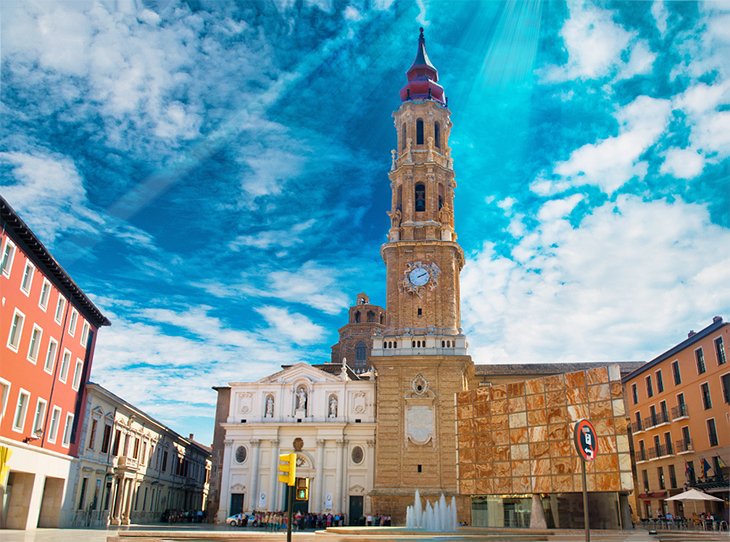
The Catedral de Zaragoza is known as Catedral de San Salvador or Catedral de La Seo or simply La Seo. Dedicated to Saint Salvador, this enormous church features five naves. Its melange of architectural styles reveal the town's complex history.
The cathedral was built on the site of the ancient Roman temple of the Forum, which became a Visigoth church and then a large Muslim mosque during the Moorish era. In the 12th century, the building was converted into a church.
Romanesque elements of the original 12th-century structure are seen in the exquisitely sculpted arcades on the exterior of the apses. The old mosque's minaret is the present cathedral's tower. A Moorish influence is also evident in the chancel and in some of the archways.
The choir is Gothic in style, while the Capilla del Santo Cristo is a masterpiece of Renaissance architecture. Adding to the architectural melange are the Neoclassical facade and Baroque details on the tower.
In addition to its treasures of religious art in the sanctuary, the cathedral has a noteworthy Tapestry Museum (Museo de Tapices). The collection contains over 60 precious Flemish tapestries of the 15th century.
The cathedral welcomes tourists for cultural visits. The price of admission includes entrance to both the cathedral and the Tapestry Museum.
Address: Plaza de la Seo, Zaragoza
Palacio de la Aljafería
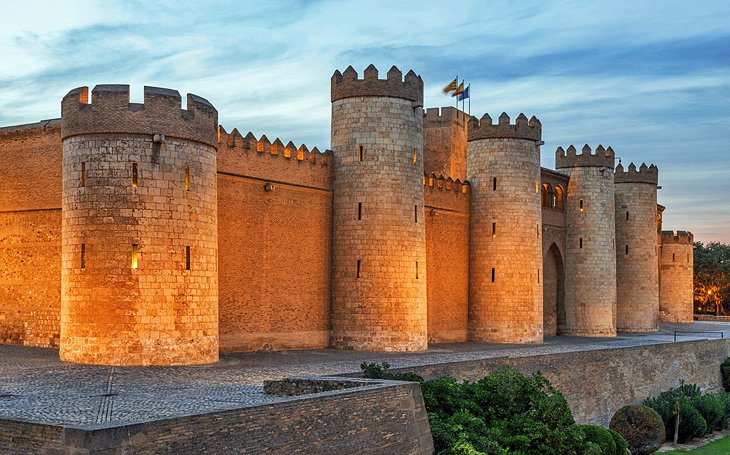
In the heart of Zaragoza, the Aljafería Palace is an 11th-century Moorish fortress. Today, the Palacio de la Aljafería houses the headquarters of the Aragonese Parliament.
Take a moment to admire the impressive architecture and fortifications. You will marvel over the formidable defense walls that feature immense crenelated towers. All of the towers are round except for a single rectangular tower, the 9th-century Torre del Trovador (Troubadour's Tower).
Within the fortress walls are three distinct palaces: the Moorish Al-Muqtadir Palace with a splendid Islamic-style garden courtyard; the 14th-century Palace of Pedro IV featuring exquisite Mudéjar coffered ceilings and plasterwork ornamentation; and the 15th-century Palacio de Los Reyes Católicos (Palace of the Catholic Monarchs).
The palace is open to the public for visits, and guided tours are available.
Address: Calle de los Diputados, Zaragoza
Acuario Fluvial (River Aquarium of Zaragoza)

Visit the world's largest freshwater aquarium and discover more than 300 species of fluvial (river) fauna. The animal species (fish, reptiles, mammals, and amphibians) on display are characteristic of five major rivers: the Nile, the Amazon, the Ebro, the Mekong, and the Murray-Darling.
At the center of the building, a symbolic glacier feeds the various "river" habitats that surround it, each with its own unique environment that replicates a river ecosystem.
The central tank holds nearly two and a half million liters of water, symbolizing the primal waters from which life first evolved. Among its major residents are Arapaima, the third-largest freshwater fish in the world; the ecologically important Pacú; and the endangered Malay shark.
The Nile exhibit's stars include freshwater pufferfish and the Nile crocodile, and Amazon species include iguana and the pygmy titi monkey.
Address: Avenida de José Atarés, Zaragoza
Educational Museum of Origami in Zaragoza (EMOZ)
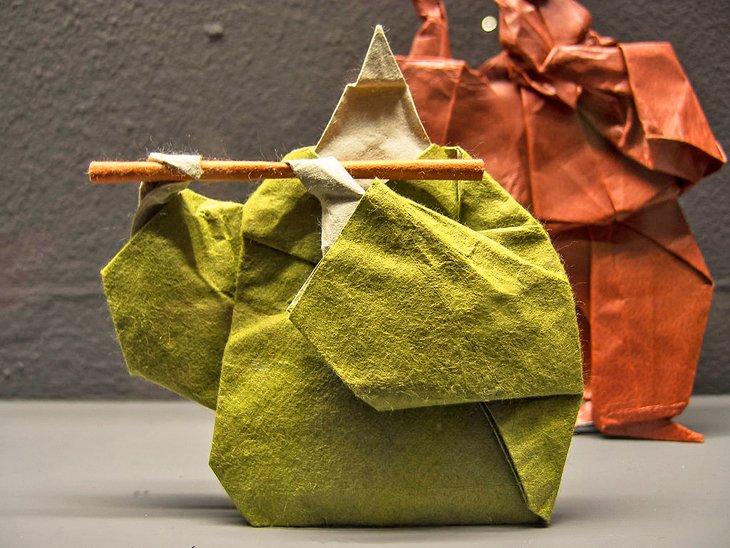
The Educational Museum of Origami in Zaragoza (Escuela Museo Origami Zaragoza) is the first of its kind in Europe. As the name suggests, the museum offers classes and workshops.
The museum's collection includes creations made by some of the world's most renowned origami artists, including Yoshihide Momotani, Akira Yoshizawa, and Vicent Floderer.
In addition to the permanent collections, the museum hosts contests and themed exhibits, which focus on various materials and artists.
Address: Plaza San Agustín, 2, Zaragoza
Iglesia de San Pablo de Zaragoza
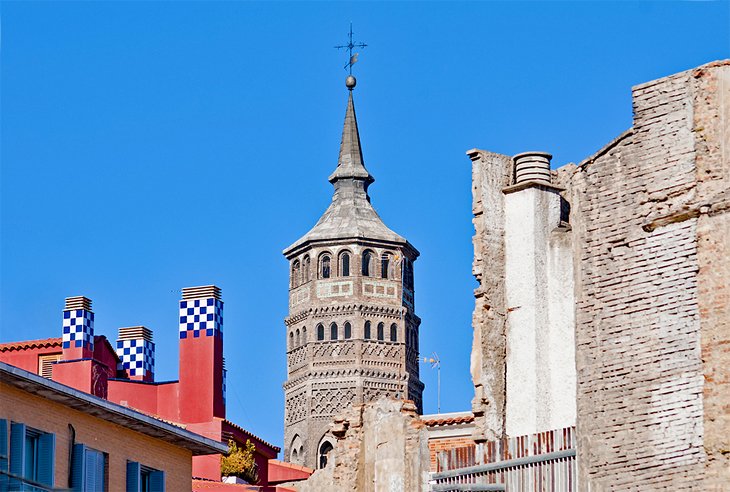
The Iglesia de San Pablo de Zaragoza is classified as a UNESCO World Heritage Site because of its exceptional Aragon Mudéjar architecture.
The church was built in the 13th and 14th centuries to replace a small Romanesque chapel, then located on the outskirts of the town. With its single nave and vaulted ceilings, the interior has a sense of spaciousness. Chapels between the buttresses display exquisite works of art.
During the 15th and 18th centuries, the church was further enhanced and enlarged. A must-see piece of the Renaissance period is the main altarpiece devoted to Saint Paul, crafted from gilded wood by sculptor Damián Forment in 1515.
The most noteworthy feature of this monument is its magnificent octagonal Mudéjar tower featuring exceptional Moorish design details.
Address: 42 Calle San Pablo, Zaragoza
La Lonja de Zaragoza
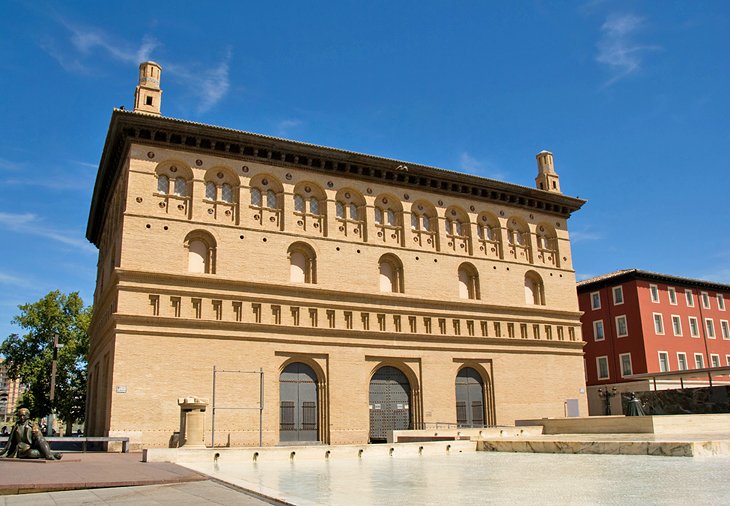
This splendid 16th-century building stands on the grand Plaza del Pilar, across from the basilica. La Lonja is the historic marketplace of Zaragoza, where merchants carried out their trading and other commercial transactions.
Designed by Juan de Sariñena, the edifice is the city's best example of Aragonese Renaissance architecture. The building, constructed in brick, features a rectangular plan and a decorative facade with rows of uniform arched windows and depictions of the kings of Aragón in medallions.
The interior features a series of stone columns, which were sculpted from the remains of the city's former Roman walls. Created by Juan de Segura, the columns turn into defined arches, appearing to turn into palm trees.
La Lonja de Zaragoza is open to the public when exhibitions are held here.
Address: Plaza del Pilar, Zaragoza
Instituto de Aragonés de Arte y Cultura Contemporáneo
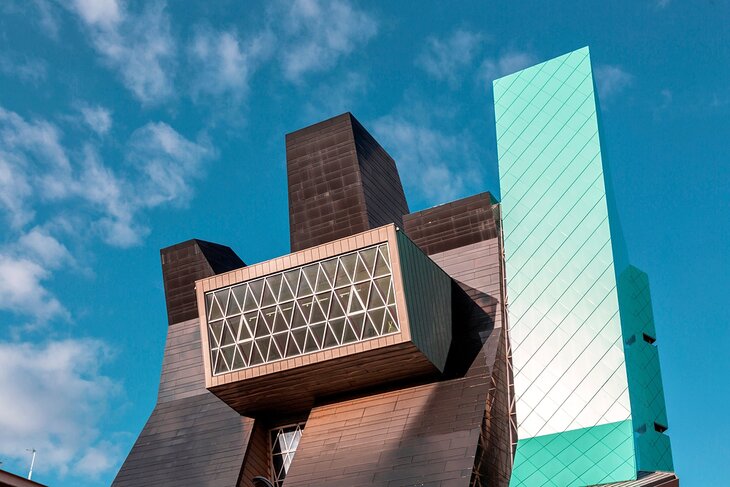
The Aragonese Institute of Art and Contemporary Culture (Pablo Serrano Museum) is dedicated to the work of renowned Aragonese artist Pablo Serrano. The museum's collection spans Pablo Serrano's work from his Figurative period to his Expressionist stage.
Exhibits display 140 drawings and sculptures, which reflect the evolution of the artist's creativity and innovation. The museum also displays works by the artist's wife, Juana Francés; contemporary graphic art works; and an assortment of paintings by Santiago Lagunas.
In addition, the museum hosts a variety of changing exhibits, which feature a range of artists, both past and contemporary. To get the most out of a visit, take a guided tour.
Address: 20 Paseo María Agustín, Zaragoza
Basílica Santa Engracia
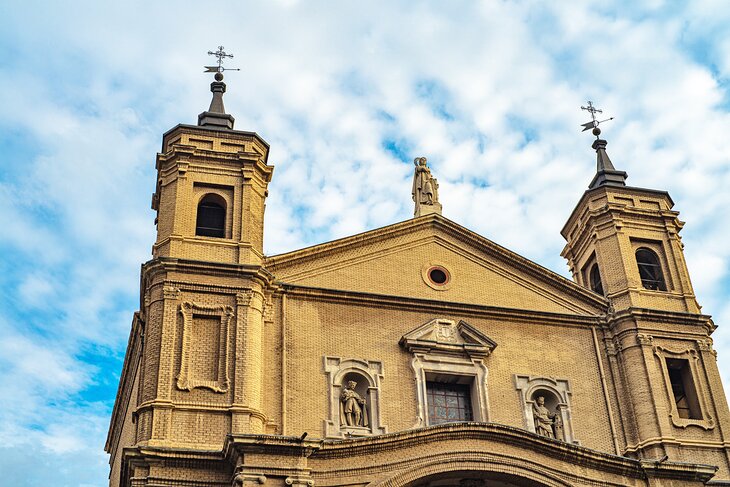
This Renaissance church was once part of the Hieronymite Monastery of Santa Engracia, however the rest of the monastery no longer exists. The church features a remarkable Plateresque facade, which is considered a jewel of Aragonese Renaissance architecture.
The facade is almost like an altar with its elaborate reliefs, medallions, and sculptures of various characters and saints. Four niches at the sides represent the parents of the Western Church. The upper niches feature the Virgin of the Holy Mass and King Ferdinand, patron of the church.
The crypt houses Paleo-Christian (early Christian) tombs of the 4th century. One particularly interesting sarcophagus depicts a scene that represents the soul in Paradise.
The Basílica Santa Engracia celebrates Mass several times daily and is also open to the public for visits everyday from 9:30am until 1pm and from 5:30pm until 9pm. Admission is free of charge.
Address: 1 Calle Tomás Castellano, Zaragoza
Museo Goya - Colección Ibercaja
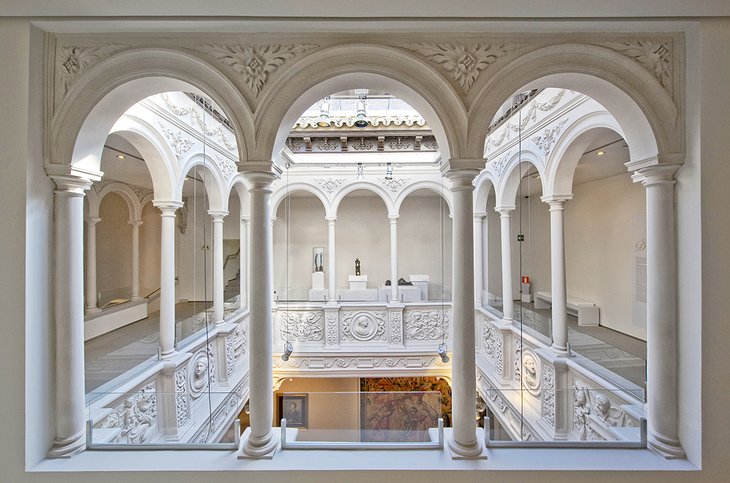
The Goya Museum - Ibercaja Collection (also known as the Museo Camón Aznar) displays a fine arts collection that was assembled by José Camón Aznar, a local professor, philosopher, art critic, and art collector. As a patron of this museum, the Spanish savings bank Ibercaja bought the mansion that belonged to nobleman Jerónimo Cósida to house the collection.
The lovely aristocratic home, with three floors designed around a splendid patio, is considered one of the finest examples of Renaissance civil architecture in Zaragoza. The permanent collection focuses on paintings of the 15th and 18th centuries, which are displayed on the first floor.
The museum's permanent collection includes a small but noteworthy assortment of works by Francisco de Goya, including 14 paintings, one drawing, and an engraving series. The works represent various timeframes of Goya's career and diverse themes from religious to whimsical.
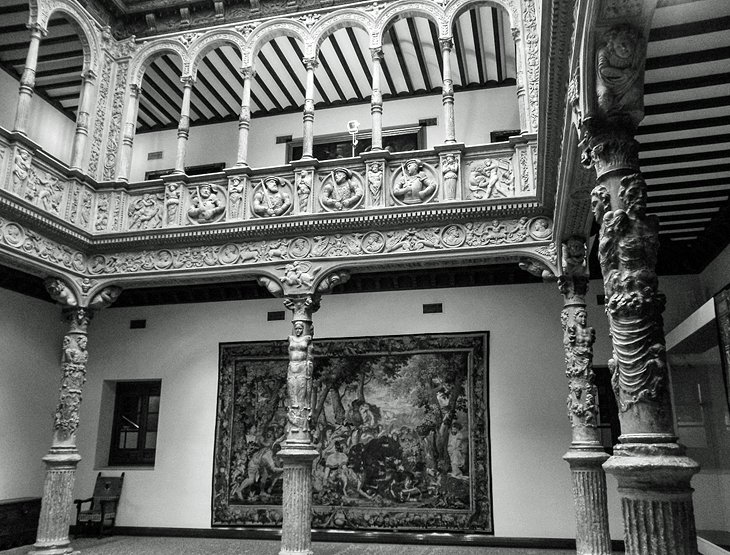
Also on display are artworks by Blasco de Grañén, Pedro Berruguete, Pedro de Campaña, Juan Antonio de Escalante, Gregorio Fernández, and José Moreno, as well as other prominent Spanish, Italian, Dutch, and Flemish artists of the 16th and 17th centuries.
A few of the standout pieces of the collection are the Retrato de la Reina María Luisa de Parma painting by Goya, San Francisco de Asís en Oración by Juan Antonio de Escalante, and Retrato de Ena Wertheimer by Cecilio Pla y Gallardo.
Address: 23 Calle Espoz y Mina, Zaragoza
Museo de Zaragoza
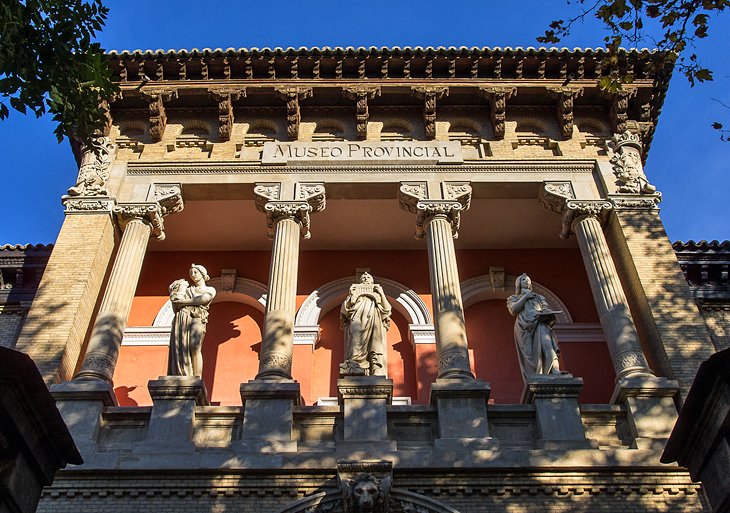
Explore the art, culture, and history of the Zaragoza province at the Museo de Zaragoza. The museum's large and diverse collection is housed in the pavilion of the 1908 Universal Expo.
The collection includes five different departments: Archaeology, Fine Arts, Ethnography, Ceramics, and Asian Art (of the Far East). The Fine Arts section presents works from the 12th century to the 20th century. The Archaeology department covers prehistory, the ancient Roman era, and the Moorish period (with antiquities from Aljafería Palace).
Not to be missed is the collection of works by Francisco de Goya, considered one of the best in Spain. The assortment shows the range of Goya's paintings and includes many masterpieces, in particular his portraits of Carlos IV, María Luisa de Parma, and the Infante Luis María de Borbón.
Address: 6 Plaza de los Sitios, Zaragoza
Museo Pablo Gargallo

Discover the work of Pablo Gargallo, the brilliant contemporary sculptor who hailed from the Aragon region. The museum displays the artist's early works of sculpture in marble and plaster, as well as later works crafted from iron and other metals.
You will gain an appreciation of the artist's creative genius and artistic vision through the displays of sculptures, drawings, engravings, cartoons, and biographical information.
Highlights of the collection include The Great Prophet, the portrait of Kiki de Montparnasse, and the statues of equestrians called the Olympic Salute.
Address: 3 Plaza de San Felipe, Zaragoza
Museo de las Termas Públicas de Caesaraugusta
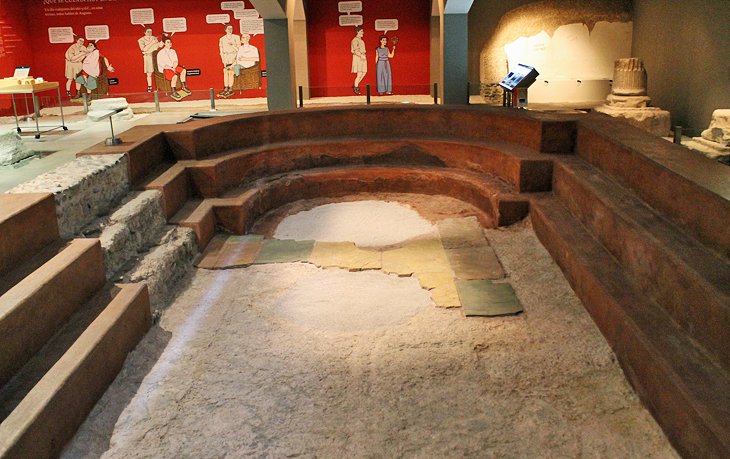
The thermal baths (dating to the 1st century CE) of Caesaraugusta were an important center of social life for the ancient Romans. More than just a place to visit for bathing, the public baths brought people together to play sports, read, and listen to music or poetry.
Typical of public baths found in the ancient Roman empire, the facilities included hot-water and cold-water baths. Bathers could alternate between the two baths, but most started with hot and then finished with cold.
Men and women were separated in different areas of the baths, or used them at different times. The city of Caesaraugusta was well supplied with fresh water and managed the maintenance of the baths.
Today, you can explore the history of Caesaraugusta's baths and see some of the remains at the Museo de las Termas Públicas de Caesaraugusta (Museum of the Public Baths of Caesaraugusta). The museum is open Tuesday through Sunday.
Address: 3 - 7 Calle San Juan y San Pedro, Zaragoza
Iglesia de Santa Maria Magdalena
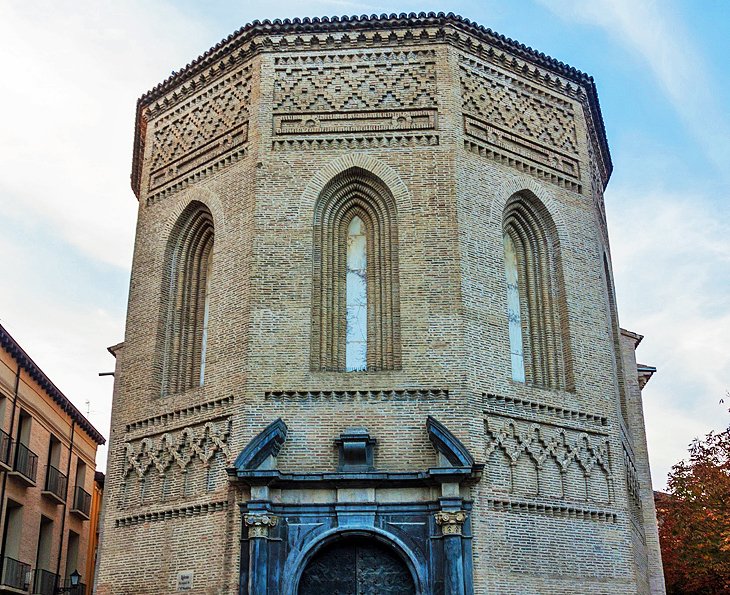
The Iglesia de Santa Maria Magdalena stands on the site of an old Moorish mosque. The original 12th-century Romanesque church (that replaced the mosque) was renovated in the 14th century and updated in the 17th century with Baroque details.
The most distinctive feature of the Saint Mary Magdalen Church is the tower, characteristic of Aragonese Mudéjar architecture; the ornamental geometric patterns mimic an Almohad-style minaret. Motifs of decorative glazed ceramics add to the Moorish look.
The interior features an unusual apse with overlapped arches and pointed windows, also typical of Mudéjar style. The main altarpiece is adorned with 18th-century sculptures and images by Jose Ramirez de Arellano.
The church is open to the public for visits (with an admission fee), and guided tours are available.
Address: Plaza de la Magdalena, Zaragoza
Iglesia de San Juan de los Panetes
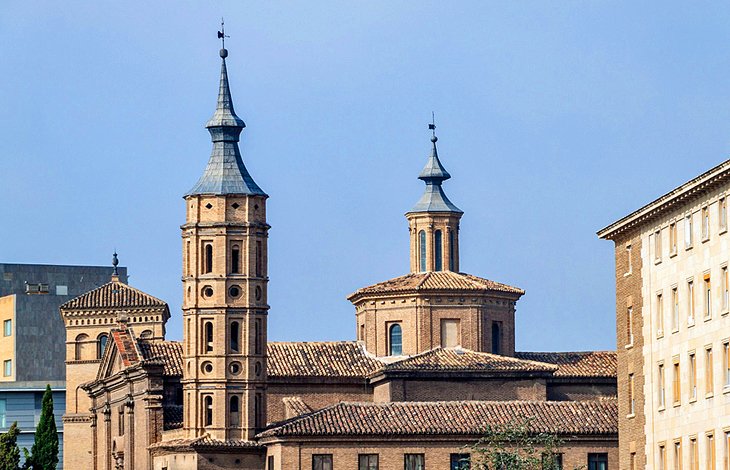
Another lovely Mudéjar church, the Iglesia de San Juan de los Panetes is found between the ancient Roman walls and the Basilica of Our Lady of Pilar.
The church was completed in 1725, replacing the Romanesque church of the Order of Saint John of Jerusalem. The austere Baroque facade features an image of San Juan Bautista and pilasters on the sides.
Like Santa Maria Magdalena, the most notable feature of this church is the Mudéjar tower. Its octagonal brick tower with arched windows recalls classic Moorish architecture. The interior offers an inspiring sense of spaciousness with its barrel vaulting and cupola on the crossing.
The church is open to the public for visits (free admission) every day. Mass is celebrated here on Sundays at 11am.
Address: 3 Calle Salduba, Zaragoza
Teatro Romano de Zaragoza
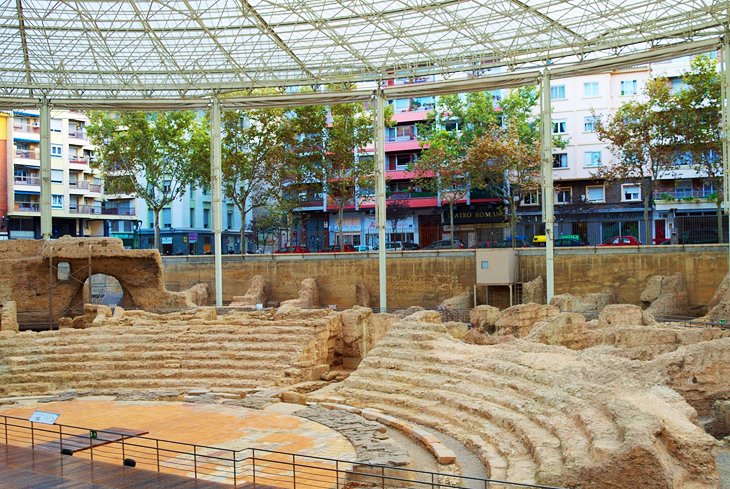
Theater performances played an important role in ancient Roman society of the 1st century CE. This archaeological site reveals the grandeur of the Caesaraugusta theater and gives you a sense of the lifestyle of antiquity.
The ancient Roman theater was excavated in 1972 and is now enclosed in a special exhibition space. The Teatro Romano de Zaragoza is open to the public (for an admission fee) Tuesday through Sunday.
In addition to the archaeological site, there is a small museum. Exhibits at the museum include models that reconstruct the ancient theater, artifacts (decorative elements) excavated at the site, and replicas of props used by ancient Roman actors.
Address: 12 Calle San Jorge, Zaragoza
Day Trips from Zaragoza
Fuendetodos and the Goya Museum
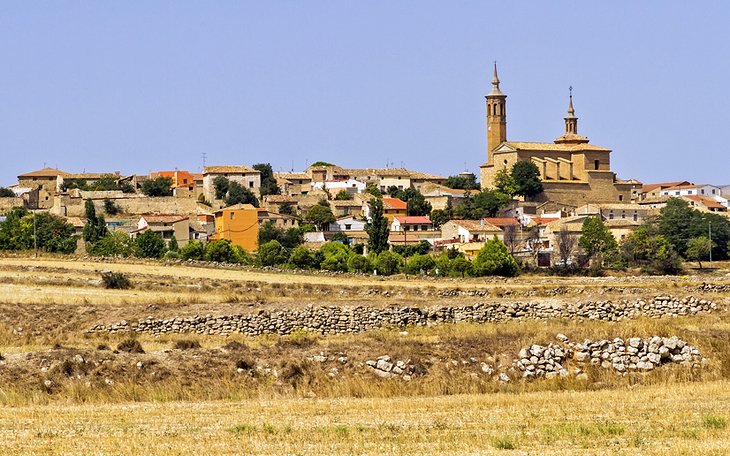
The famous Spanish painter Francisco de Goya was born in this quaint little country town, 47 kilometers outside of Zaragoza.
The tourist highlights of the town are the Casa Natal de Goya, the 18th-century farmhouse where the artist was born, and the Museo del Grabado which displays many noteworthy etchings by Goya, including Los Desastres de la Guerra, Los Caprichos, Los Disparates, and La Tauromaquia.
Huesca
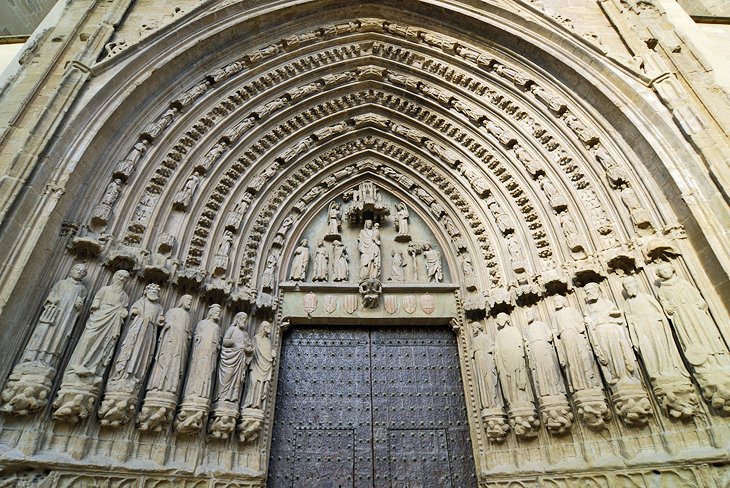
Steeped in 2,000 years of history, Huesca still has vestiges of the old medieval walls. Within the ancient enclosures is a labyrinth of narrow pedestrian streets and monumental buildings that seem to preside over the town.
The cathedral was built in the 13th century on the site of the Misleida Mosque; its position high on the summit of the town offered protection against invaders during the Reconquest period.
Be sure to admire the cathedral's magnificent facade, featuring statues of the apostles above the doorway. Another must-see attraction is the Monasterio de San Pedro el Viejo, founded as a Benedictine monastery in the 11th century.
The monastery boasts one of Spain's oldest sacred monuments, which has foundations as a Roman temple and later as a Visigothic church. The 12th-century church has a beautiful Romanesque cloister featuring colonnades with decorative capitals.
Near Huesca are two natural parks. The Ordesa and Monte Perdido National Park is designated as a UNESCO Biosphere Reserve, and has a charming Parador hotel at the foot of the mountain. Cañones de Guara Natural Park is popular with outdoor sports enthusiasts, especially for hiking and canyoning.
The gastronomy of Huesca is known for its excellent sausages and roast meats, as well as the local specialty of Ajoarriero de Huesca (cod in oil and garlic).
Huesca is 74 kilometers (about a 50-minute drive) from Zaragoza.

Sos del Rey Catolico
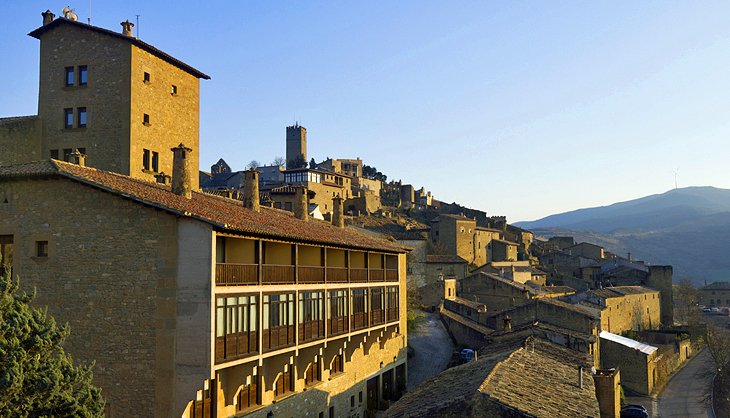
Sos del Rey Católico is a little walled town that has retained its charming medieval character. King Ferdinand of Aragon, "el Rey Católico," was born here in 1452 in the Palacio de Sada, which dates to the 12th century.
Gracing the main town square, the Plaza Mayor, are the Renaissance Ayuntamiento (Town Hall) and La Lonja (the Exchange).
Nearby is the 11th- to 12th-century Iglesia de San Esteban. This parish church is a wonderful example of Romanesque architecture with a decorative sculptured doorway. The sanctuary boasts excellently preserved 14th-century wall paintings.
The town of Sos del Rey Católico is 120 kilometers (about a one-hour and 40-minute drive) from Zaragoza.
Monasterio de Piedra

The Monasterio de Piedra is nestled in a densely wooded landscape where waterfalls, lakes, and freshwater streams are found in abundance. This is one of the most remote natural areas of the Aragon region (110 kilometers from Zaragoza).
The monastery was founded in 1194, when King Alonso II and his wife Doña Sancha handed over an old Moorish castle to the Poblet monks, with instructions to build a monastery and spread the Christian faith.
Because of its serene setting and pristine environment, the site is an important center of fishing and reforestation. In 1940, the site was declared a National Scenic Spot.
The Monasterio de Piedra is open to the public throughout the year. You may visit the Monastery and the Historical Garden Park.
There's also the option of an overnight stay at the Hotel Monasterio de Piedra & Spa. Housed within part of the Monastery, this hotel has a spa, restaurant, outdoor swimming pool, sundeck, and fitness center. Staying at the hotel allows you to enjoy the Historical Garden Park. You may take advantage of picnic tables and bicycle tours.
The lush area around the monastery features well-groomed paths through the forest, where you can go for a walk to enjoy the spectacular scenery.
Map of Attractions & Things to Do in Zaragoza
More Related Articles on PlanetWare.com

Exploring Barcelona: Just over three hours by car from Zaragoza is the seaside city of Barcelona, which holds endless wonders, from the rich history of the Gothic Quarter to the scenic Parc de Montjüic. Other top tourist attractions include architectural masterpieces created by Antoni Gaudí, including the UNESCO-listed Basílica de la Sagrada Família and the whimsical Park Güell.
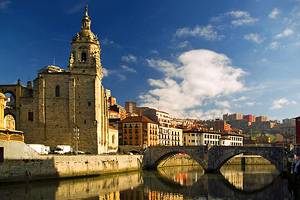
Exploring Bilbao: Tourists interested in modern architecture and art will enjoy the city of Bilbao, home of the Guggenheim Museum, one of the top tourist attractions in northern Spain. This previously overlooked town became a top tourist destination in Spain thanks to this stunning building, and here you can also find beautiful churches, as well as a variety of other museums, including archaeology, fine arts, history, and a maritime museum.
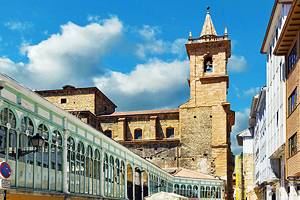
Exploring Oviedo: Near the northern coast of Spain, Oviedo is best known for its churches, including the Catedral de Oviedo, the Iglesia de Santa Maria del Naranco, and the Iglesia de San Julián de los Prados. The area is also famous for its regional cuisine.



